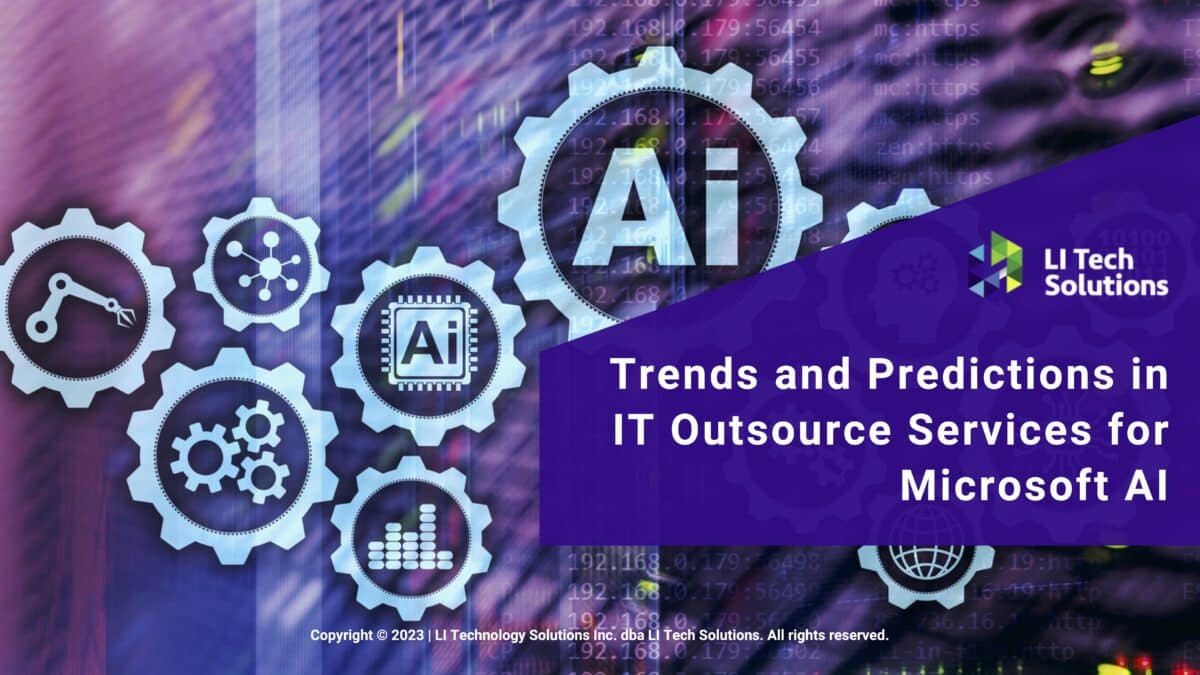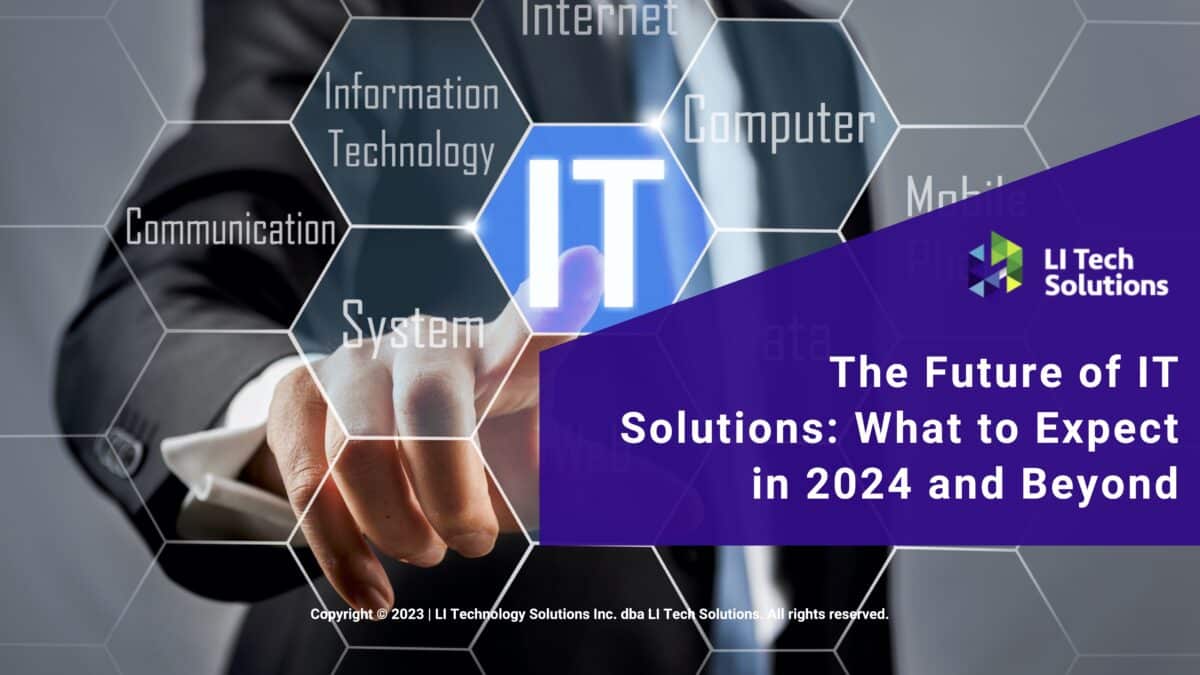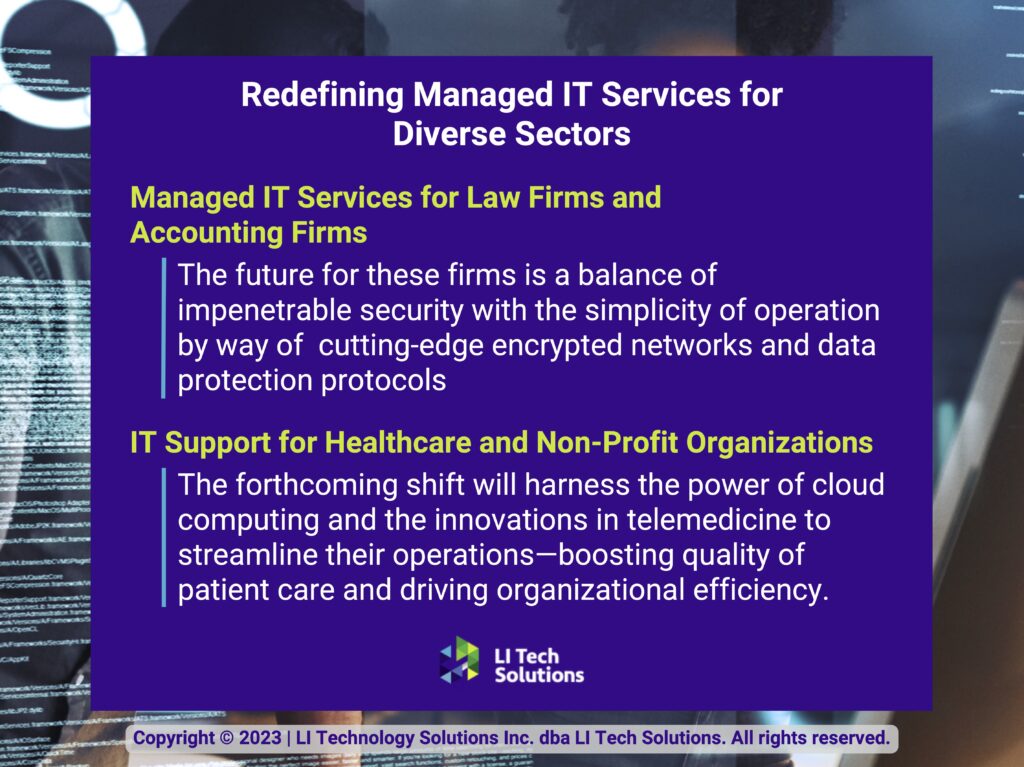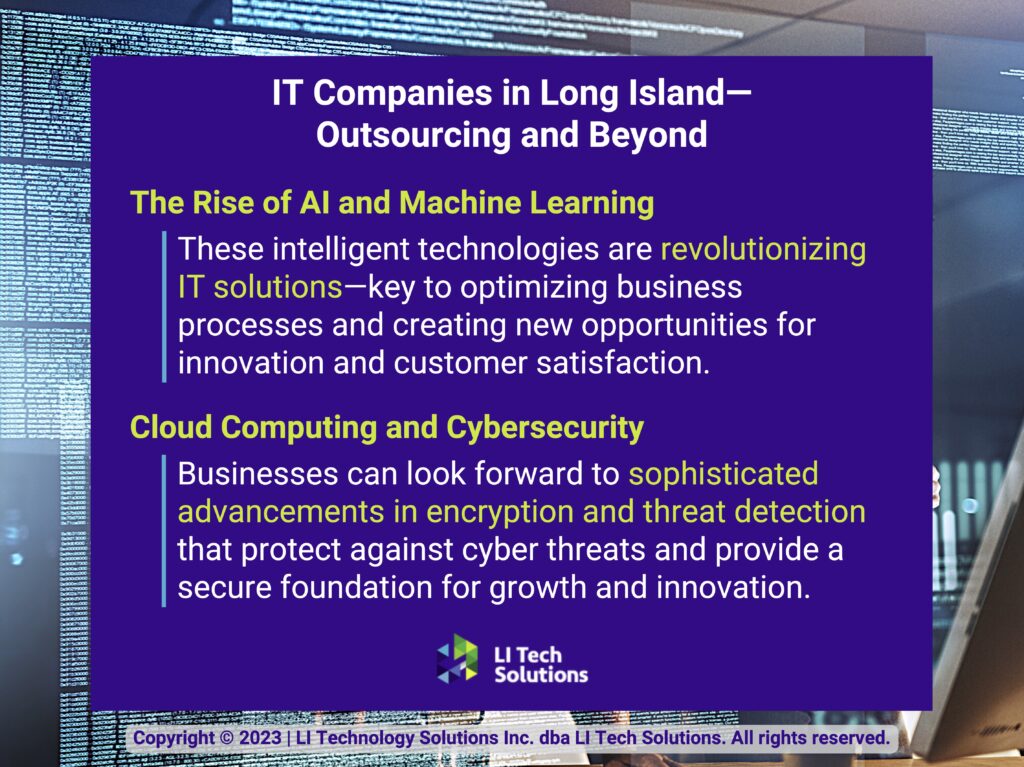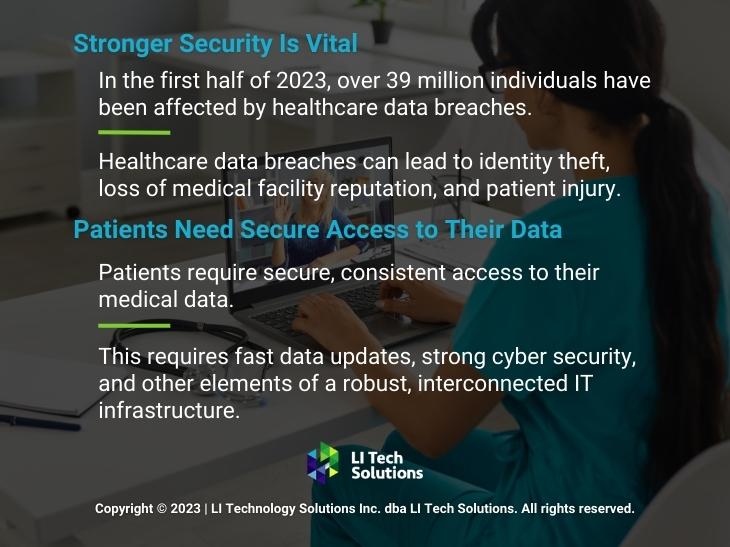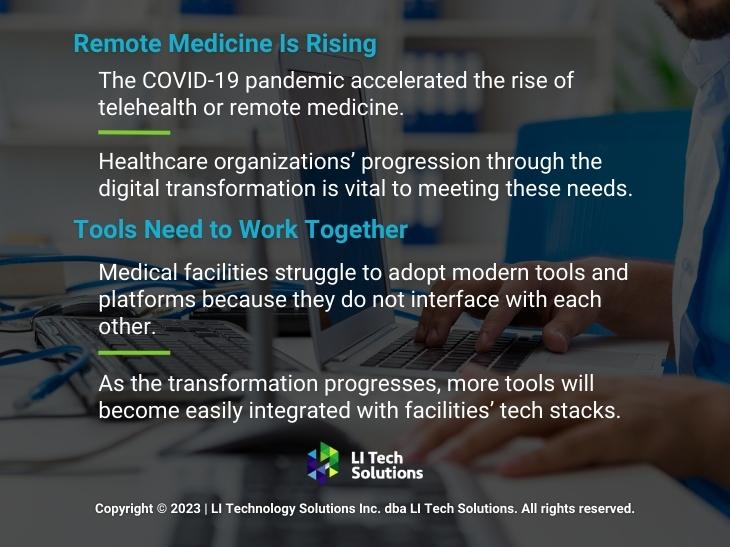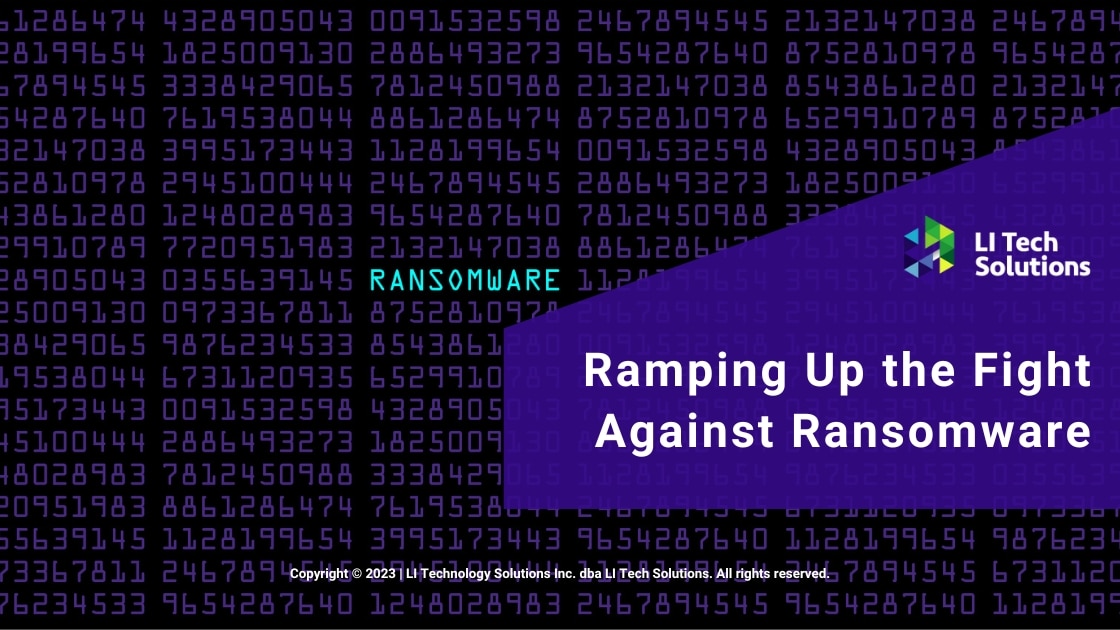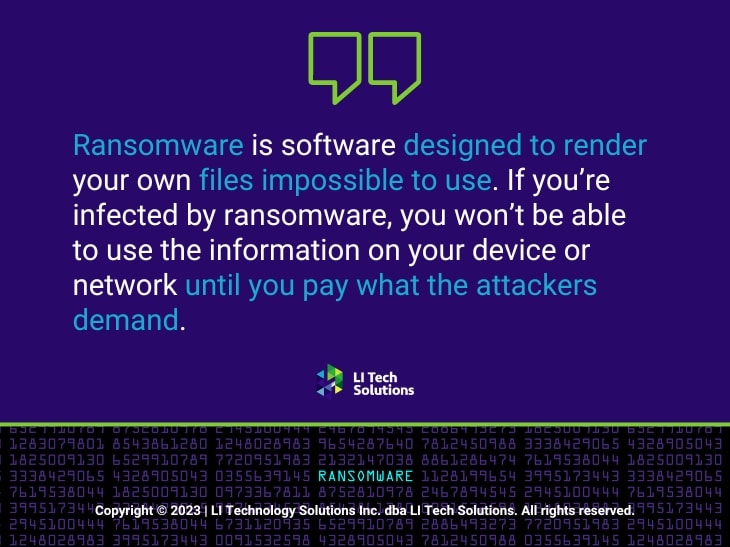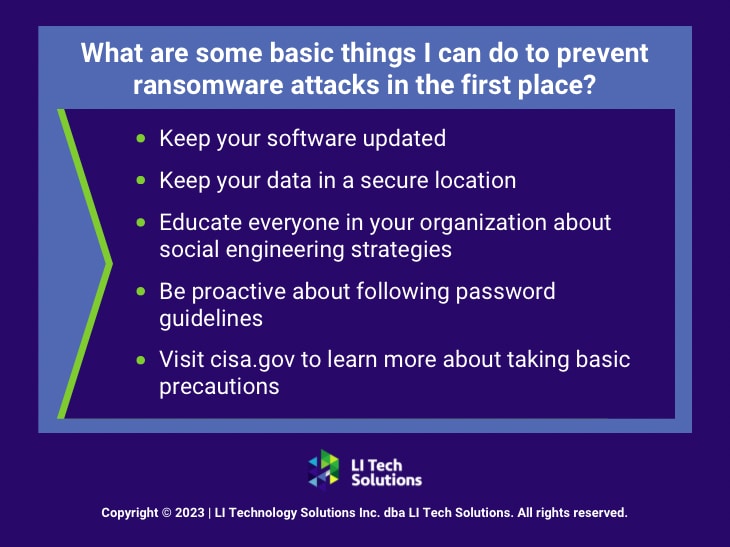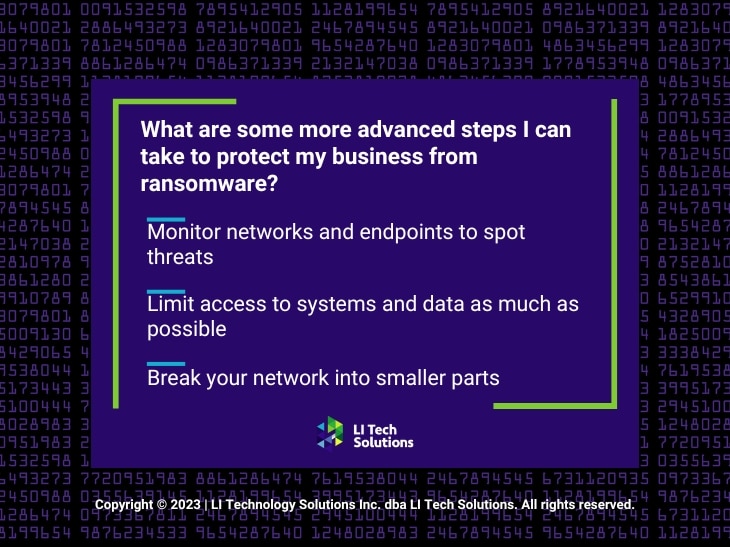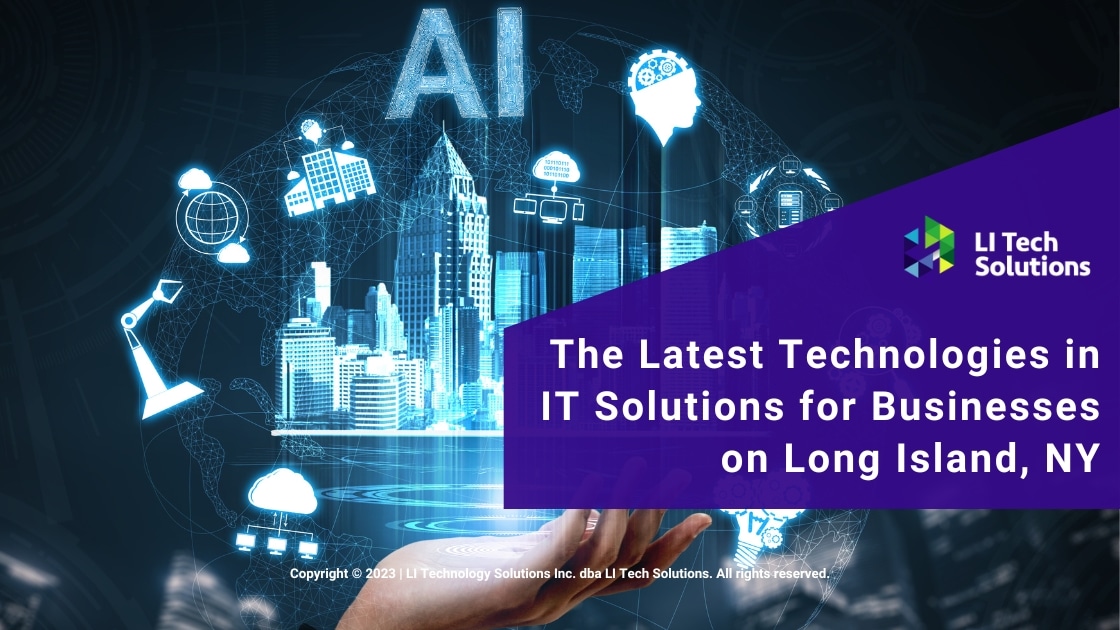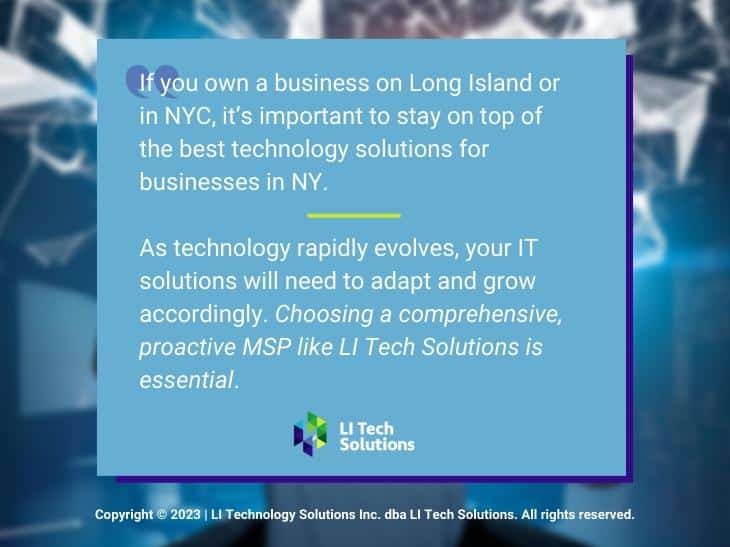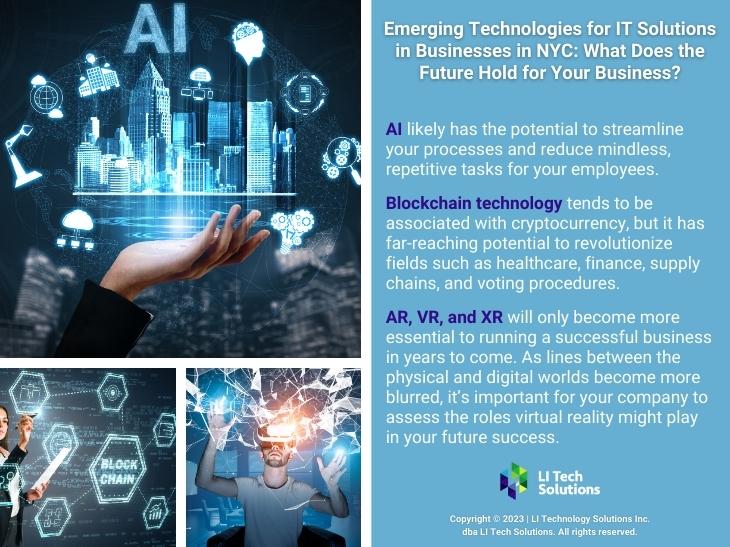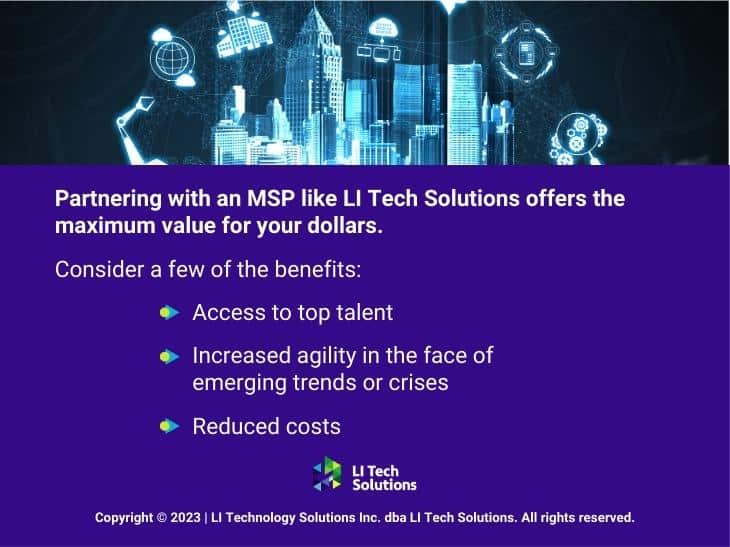The Future of Microsoft AI Services: Trends and Predictions for Businesses on Long Island
It’s hard to overstate AI’s current impact on the business sector. Over half of today’s businesses use AI for one or both of their most popular applications: enhancing customer service and supporting cybersecurity and fraud management efforts. While many business leaders remain concerned about AI’s possible impact on their future success, its benefits are powerful and undeniable. At LI TECH, we think the right approach to AI implementation is proactive. We don’t recommend waiting until the last minute to get on board with trends that give you a competitive edge. We also don’t recommend becoming such an early adopter that you become a cautionary tale to your competitors. Our IT outsource services can help you add AI services to your toolbox in strategic and effective ways.
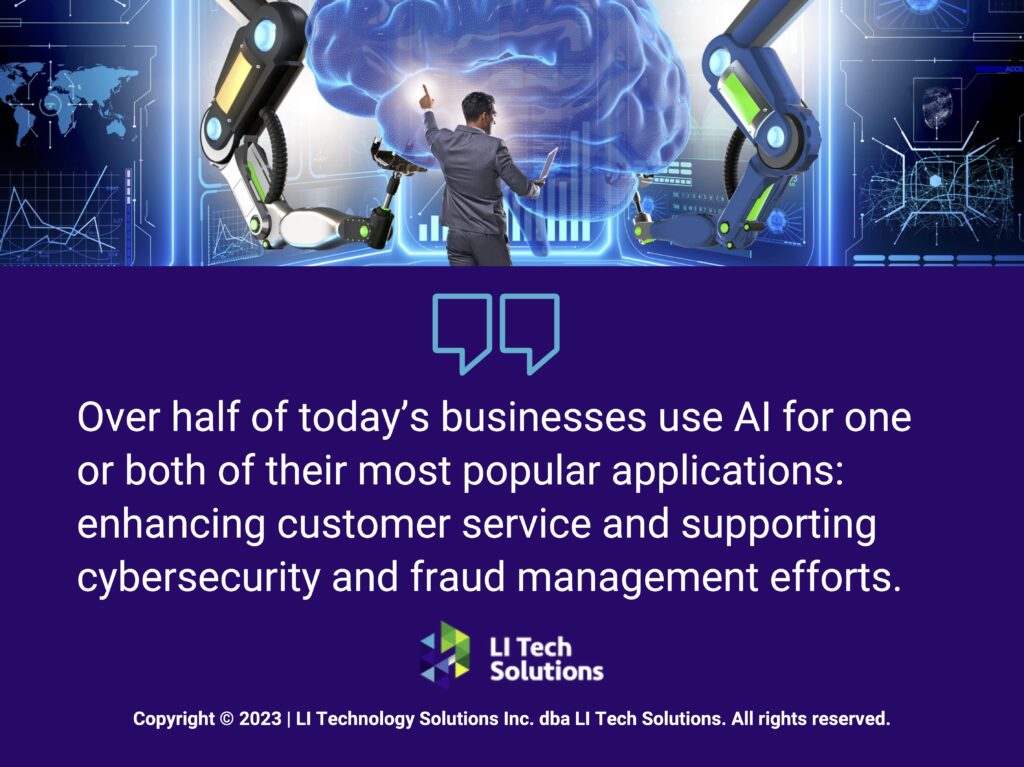
As a top provider of outsourced IT services on Long Island, NYC, LI TECH can handle all of your business’s managed tech needs. Let us handle your cloud infrastructure, data protection, training needs, Microsoft AI services, and more. In this article, we share a few trends and predictions about how Long Island, NYC businesses will use Microsoft AI services.
Microsoft AI Services Will Continue to Revolutionize the World of Customer Service
Today’s customers expect lightning-fast answers to their questions. However, human customer service agents can only help one customer at a time. In contrast, an AI chatbot can assist multiple customers at the same time, at any time of the day or night. Moreover, advances in natural language processing have unlocked the potential for highly natural, satisfying conversations with AI customer service tools.
One advantage of AI as a service (AIaaS) is that it lets you adopt AI solutions in a low-risk, low-cost way. When you partner with LI Tech, you’ll discover how Microsoft AI services can improve your customer experience incrementally.
AI for Business: Top Trends Transforming Operations in 2025
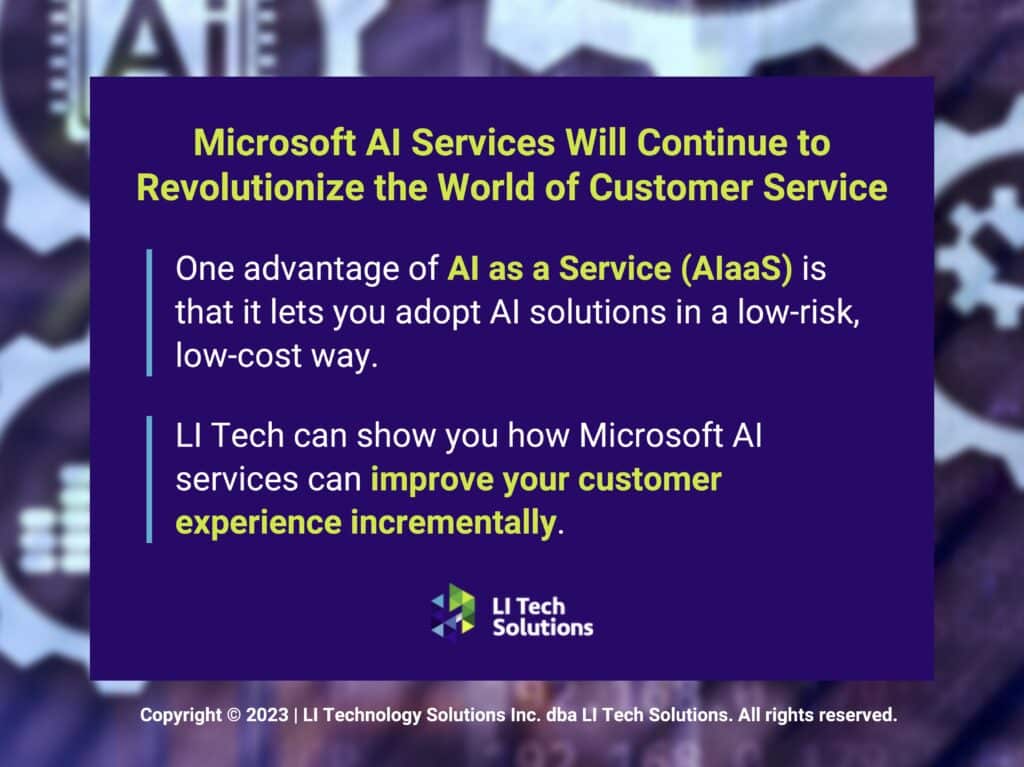
Microsoft AI Outsource Services Can Streamline Your Organization’s Internal Processes
You can enjoy smoother, more efficient workflow management with Microsoft AI services. AI tools can automatically assign tasks, streamline feedback and approval processes, and conduct data-driven market research. Instead of burdening human employees with mindless tasks like data entry or routine reporting, you can allocate much of your organization’s “busy work” to AI tools.
While shifting this work from humans to AI programs might sound daunting, it doesn’t have to be. LI TECH helps business leaders integrate Microsoft AI services into their organizations’ daily tasks – without having to become tech experts on the fly.
Business Transformation Consultant’s Guide: Microsoft vs Google Workspace on Long Island, NY
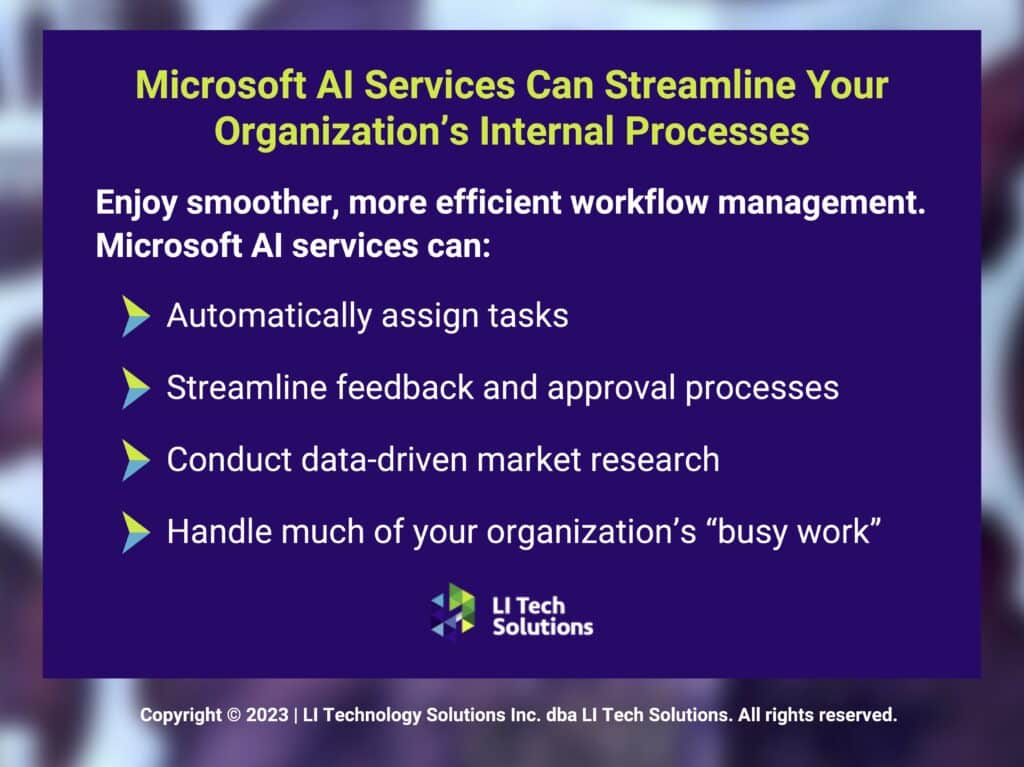
Microsoft AI Services Can Enhance Your Cybersecurity Protocols
The world of cybersecurity is constantly evolving, and it’s essential to stay one step ahead of emerging threats. Microsoft AI services can add one more tool to your cybersecurity toolbox. Microsoft’s cutting-edge AI solutions can help you detect threats faster, speed up your response cycle, and gain the upper hand over cyber criminals.
Understanding IAM in the Modern Cybersecurity Landscape: Challenges and Solutions
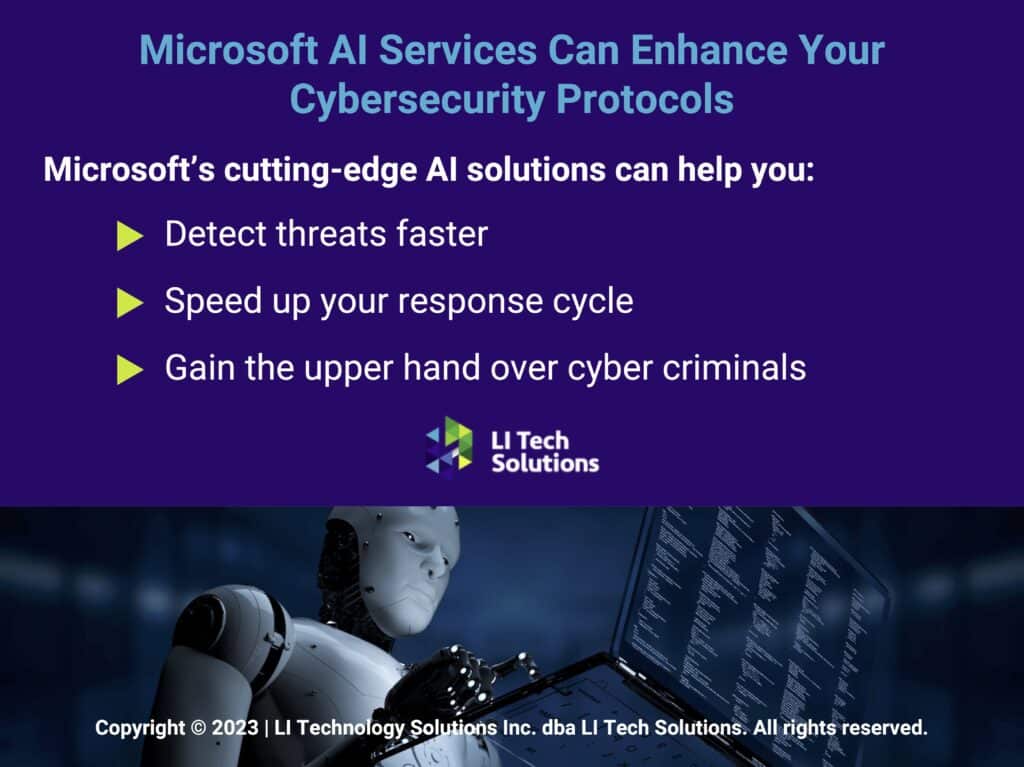
Why LI TECH’s IT Outsource Services Make Sense for All of Your Microsoft AI Needs on Long Island, NY
At LI TECH, we’re not just a Microsoft AI services provider. We can also handle your hardware and software needs, outsourced IT consulting, networking and cybersecurity needs, and other IT solutions that can help your business thrive. As an official Microsoft partner, we know how to engineer and manage the Windows ecosystem, including desktops, servers, and support infrastructure.
Your business can benefit from our in-depth knowledge of Microsoft without hiring a full-time IT support team. Our Long Island, NYC team will support you in implementing Microsoft AI solutions, from adoption to training to ongoing support.
Interested in making the most of what Microsoft AI services can offer? Want to team up with LI TECH for the IT outsource services you need? Contact us today to get started with a free consultation and technology assessment.

